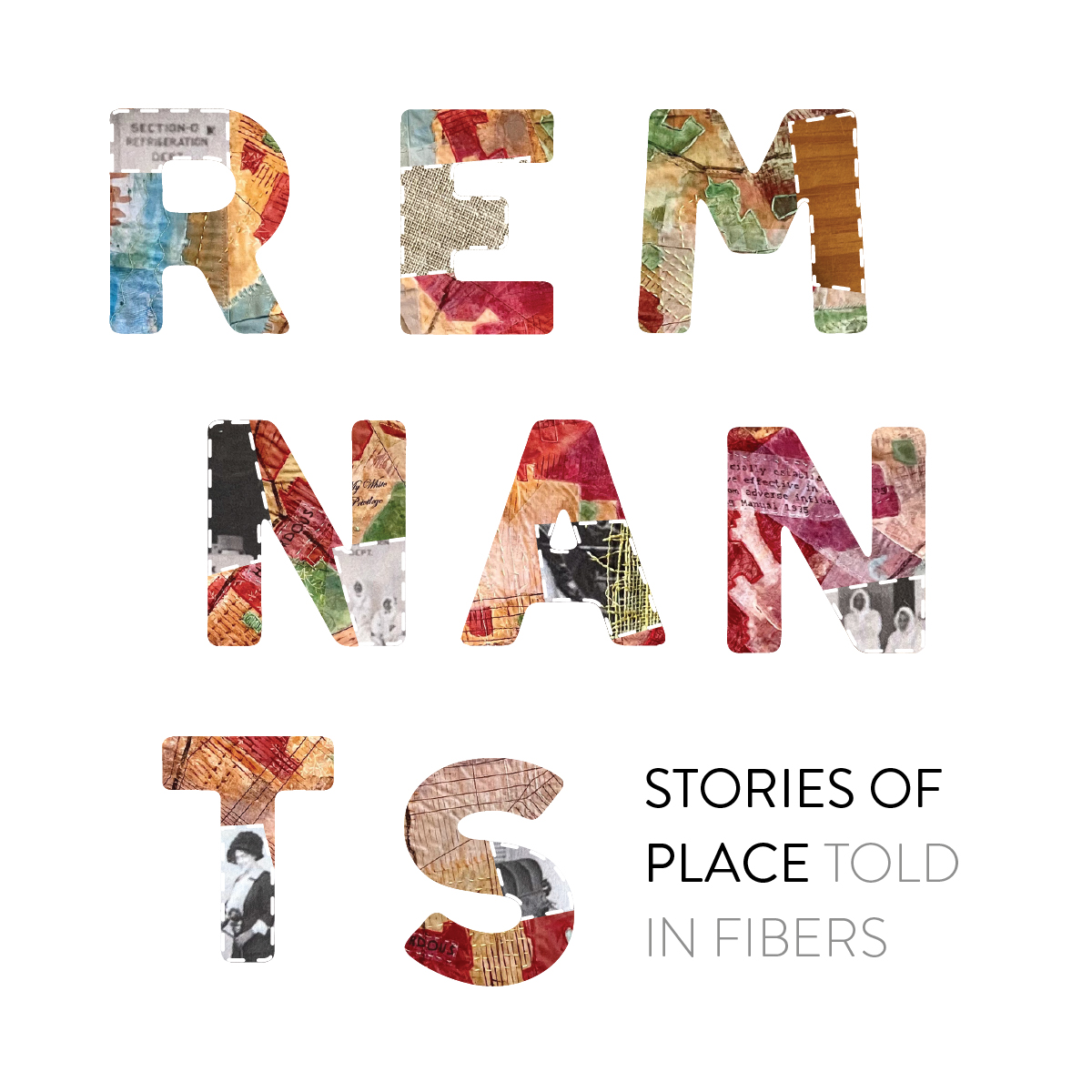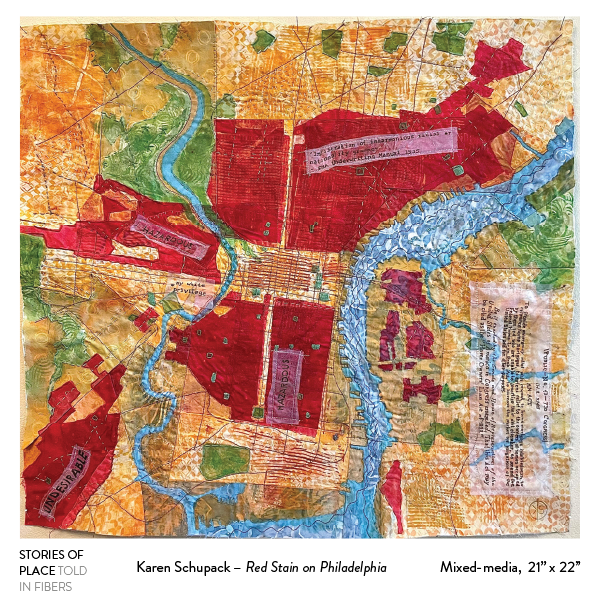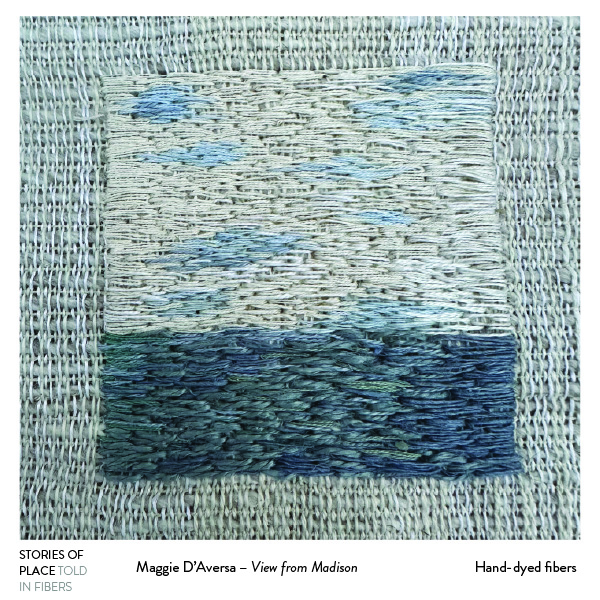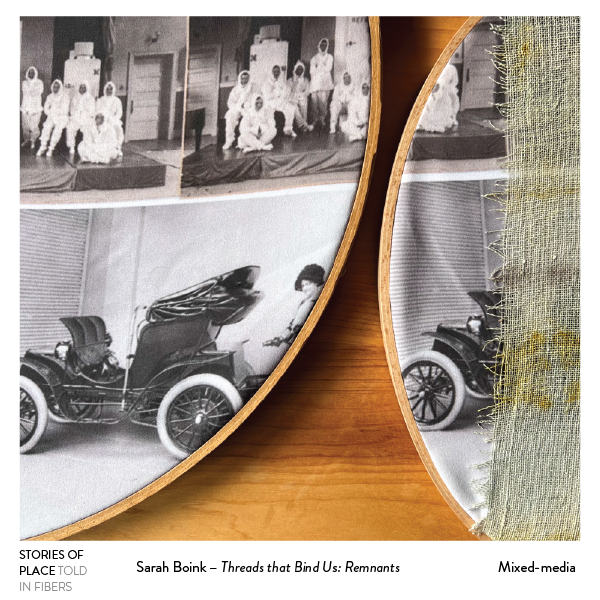



REMNANTS
Places carry identity, memory, and history. When you live in a place you become an heir, interpreter and contributor to that shared essence. The connections that are formed between people and places weave a rich story of opportunity, barriers, triumph and struggle.
Main Street Studio welcomes “Remnants”, an exhibition bringing together three regional artists whose work explores these stories of place, through the lenses of identity, power and injustice. Through the intersections of threads, dyes and fabrics, stories that are often buried in bureaucracy, big data or hidden away in archives find their way into present narratives.
Exhibiting Artists: Karen Schupack, Maggie D’Aversa and Sarah Boink
Exhibit Dates: March 1 – March 30
Gallery Hours: Fridays, Saturdays & Sundays, 10am – 4pm
About the artists
Karen Schupack
Karen Schupack is a mixed-media fiber artist based in Albany, New York. Karen creates mixed-media fiber maps about past and present government practices that reinforce racial segregation in our urban environments.
In a related series, Karen explores the visual and symbolic possibilities of rust on fabric. The subject of these new works is quantitative information about systemic inequalities such as home ownership rates, life expectancy, and wealth disparities.
Through vat dyeing, printing, and painting with rust, Karen transforms fabric and uses it as the primary component of these pieces. By contrasting the rusted fabric with fine white linens, the pieces reflect the stark discrepancies for rich and poor, black and white people in our country.
Karen's art takes data out of its typical context and offers a new opportunity to confront and reflect on its implications. Through her art, Karen hopes to spark conversations and inspire others towards positive social change.
Maggie D'Aversa
Maggie D’Aversa has a rich history with observing and thinking about connections, specifically, the hidden ones in systems and their structures. She uses textiles and sometimes prints to illustrate her finds.
What she has found and continues to find are those pieces that are left behind that tell the real story, the meaning of a system; the remnants of textile objects that enabled the slave trade in the 1700's, a colonial household in the 1700’s or on a remote beach in the Adirondacks.
Textiles have fascinated her for most of her life and she has been fortunate to spend time in different countries and cultures researching and developing interesting textile constructs for the past 35 years. She trained as a textile and materials engineer/scientist and spent over three decades researching and developing textiles for industrial and medical uses with the majority of her time at Johnson & Johnson, Inc.
Over the years, Maggie has turned to studying social science researching and defending her dissertation on public health and the conditions of premature death for marginalized populations. Now, she sits at her loom or stands next to a dye vat and connects her experiences.
Sarah Boink
Every fiber has a past. In Sarah Boink's work, remnants — discarded textiles, salvaged materials, and fragments of the forgotten—become the foundation for something new. These pieces carry echoes of use and memory, bearing the imprints of time, touch, and transformation.
Sarah is drawn to the tension between what is lost and what remains. A torn scrap of linen, a frayed edge, a loose thread—these are not just leftovers, but artifacts of resilience. In layering, weaving, and stitching these remnants together, Sarah is not merely mending; she is amplifying their histories, honoring what they once were while reimagining what they can become.
Through this process, she explores themes of connection, adaptation, and survival. Just as fabric unravels and reforms, so do we—shaped by the remnants of our experiences, our communities, and the stories we inherit. Sarah’s work in Threads that Bind Us: Remnants is a meditation on what we hold onto, what we let go of, and how we create meaning from what remains.
This exhibition is an invitation to look closer, to see the beauty in the fragments, and to recognize that even in what appears broken, there is the possibility of renewal.